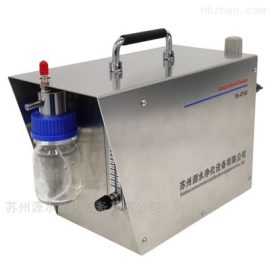Aerosol Generator: Principles and Applications in Modern Science

# Aerosol Generator: Principles and Applications in Modern Science
## Introduction to Aerosol Generators
An aerosol generator is a device designed to produce fine particles or droplets suspended in a gas, typically air. These devices are widely used in various scientific, industrial, and medical applications. The ability to generate aerosols with precise control over particle size and concentration makes them invaluable tools in modern research and technology.
## Principles of Operation
Aerosol generators operate on several principles, depending on the desired output and application. Common methods include:
– **Nebulization**: This method uses ultrasonic waves or compressed air to break a liquid into fine droplets.
– **Electrospray**: A high voltage is applied to a liquid, creating charged droplets that are then dispersed into the air.
– **Condensation**: Vapors are cooled to form liquid droplets, which are then suspended in a gas.
– **Atomization**: Mechanical forces are used to break a liquid into small droplets, often through the use of nozzles or spinning disks.
Each method has its advantages and is chosen based on the specific requirements of the application, such as particle size distribution, concentration, and the nature of the material being aerosolized.
## Applications in Modern Science
Aerosol generators have a wide range of applications across various fields:
### 1. **Medical and Pharmaceutical Research**
In the medical field, aerosol generators are used to create inhalable drug formulations. This is particularly important for treatments targeting respiratory diseases, such as asthma or chronic obstructive pulmonary disease (COPD). By generating aerosols with precise particle sizes, researchers can ensure that the medication reaches the desired part of the respiratory system.
### 2. **Environmental Science**
Aerosol generators play a crucial role in environmental studies, particularly in the simulation of atmospheric conditions. They are used to study the behavior of aerosols in the atmosphere, including their impact on climate change, air quality, and cloud formation. This research is essential for developing strategies to mitigate pollution and understand global warming.
### 3. **Industrial Applications**
In industry, aerosol generators are used for coating processes, where a fine mist of material is applied to a surface. This is common in the production of electronic components, where thin, uniform coatings are required. Additionally, aerosol generators are used in the testing of air filters and respirators, ensuring they meet safety standards by capturing particles of specific sizes.
### 4. **Laboratory Research**
In laboratory settings, aerosol generators are used to create controlled environments for experiments. This is particularly important in studies involving particle physics, chemistry, and biology. By generating aerosols with known properties, researchers can conduct experiments with a high degree of precision and reproducibility.
## Conclusion
Aerosol generators are versatile tools that have become indispensable in modern science and industry. Their ability to produce finely controlled aerosols has opened up new possibilities in research, medicine, and technology. As our understanding of aerosols continues to grow, so too will the applications of these remarkable devices, driving innovation and improving our quality of life.
Keyword: Aerosol Generator
